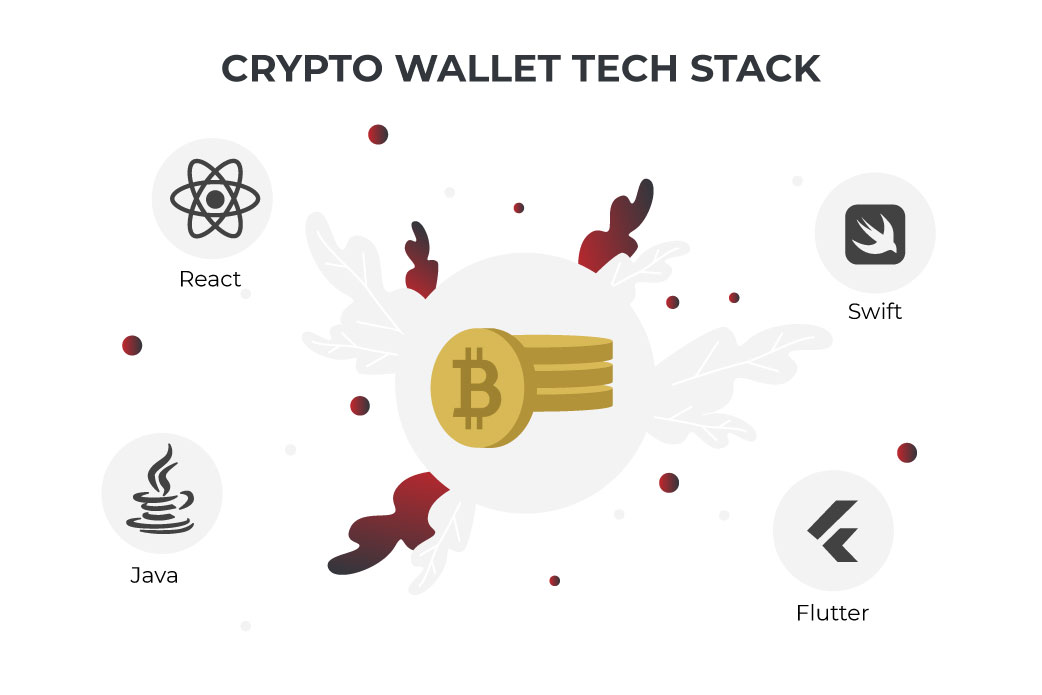How To Make Your Own Cryptocurrency Wallet

It is important to ensure when creating a crypto wallet the process is simple and easy for the user to navigate. To know how to make a crypto wallet or to create a bitcoin wallet requires further exploration. One should not confuse how to create a cryptocurrency wallet with how to set up a crypto wallet. When delving into how to create a cryptocurrency wallet it will be beneficial to acquire basic information on how to set up a crypto wallet. There are services that help create a crypto wallet that doesn’t require the client to know much about how to create a wallet for cryptocurrency, however, it helps to know the basics.
Crypto Wallet Market Statistics
As of January 2022, there are over 80 million registered crypto wallets. When contemplating how to make a crypto wallet the popular choice is to create a bitcoin wallet. The total market cap for cryptocurrencies has reached over 2 trillion US dollars. The number of users in the cryptocurrency world has exceeded 300 million and these are just some of the interesting facts regarding the cryptocurrency world.

What is a crypto wallet?
Before we jump into how to create a crypto wallet, we first need to know what a crypto wallet is. A crypto wallet is needed by a user for purchasing, selling, or trading in cryptocurrency. Basically, a crypto wallet allows the user to access their cryptocurrency. I say access because a crypto wallet doesn’t function like a conventional wallet. A crypto wallet doesn’t store your cryptocurrency but is a tool a user needs in order to access their cryptocurrency which is stored in the blockchain.
Why a crypto wallet is important
Anonymity is one of the main aspects that crypto users value. Data in every transaction is encrypted therefore users’ personal information is not shared.
Using cryptocurrency for transactions also provides users with the highest level of financial transparency.
Cryptocurrency is decentralized meaning there are no intermediaries between both parties. This results in transactions being processed much quicker and makes it ideal for international transactions.
Finally, the simplicity of cryptocurrency transactions is very appealing to its users.
Types of cryptocurrency wallets
Crypto wallets are commonly broken down into 2 categories, which are hot storage and cold storage. However, it’s also worth taking into consideration a lesser-known classification of crypto wallets which is custodial or non-custodial crypto wallet. Those intending to create a cryptocurrency wallet should know that the field of crypto wallet development has allowed for advancement in safety measures for its users.
A crypto wallet can then be sorted into different platforms which are determined by the devices on which the software is operating:-
Web wallet: A web crypto wallet is typically a crypto wallet that is a browser extension. Users will download and install an extension on the supported browser and can then login and access their cryptocurrency through the browser extension. This is the most convenient crypto wallet as it allows the user access from anywhere. However, this is probably the least safe option as the private login keys are stored online.
Desktop wallet: A desktop crypto wallet is a crypto wallet where the user will need to install the software directly onto their desktop. The key difference between a web wallet and a desktop wallet is that in the case of a desktop wallet the user’s private login key is stored directly on the desktop, whereas the other is stored online.
Mobile wallet: A mobile crypto wallet is a good middle ground between a web and a desktop crypto wallet. A mobile crypto wallet has the security of not having to save the private login keys online but has convenient accessibility. It is probably the best option for businesses that need to reach their customers through cryptocurrency.

Hardware wallet: A hardware wallet is the safest option but also least convenient for users. A hardware wallet is a specially developed device that stores the users’ private keys on physical hardware, typically a USB drive. For the users to access their cryptocurrency, they will have to plug the device into a desktop or a laptop. This device is not recommended for users who need to frequently access and trade their cryptocurrency.
Paper wallet: A paper wallet is a printed document that includes the user’s private and public keys. Some paper wallets also include a scannable barcode or QR code generated by the software used to print the paper wallet. Paper wallets were used during the early stages when cryptocurrency was becoming popular, however, it is not commonly used now, since the crypto wallet technology has advanced tremendously.
Key features of a crypto wallet
To make a cryptocurrency wallet you must first understand the steps required to know how do I make a bitcoin wallet. The key features when developing a crypto wallet are very important. This determines how functional your crypto wallet will be.
Registration
This allows users to fill in their information along with their keys in order to access their cryptocurrency.
User profile
This feature will allow the user to edit their banking information and link multiple credit cards.
Address book
A feature to allow users to make transactions easier and faster to addresses, they frequently conduct transactions
Cryptocurrency management
Allows the user to send, receive and even trade their cryptocurrencies
QR Code scanner
Simplifies the process where users send and receive funds
Notification
This function should allow users to edit the push notification setting to personalize the notifications they will receive. Notifications are also a good way for users to keep up to date with currencies of their choice in real time

Transaction history
This allows users to keep track of their recent transactions
Cryptocurrency price chart
Allows the user to view and keep track of cryptocurrency movements of their choice, in real time
Security features
This should allow users to add additional security features such as face ID, additional verification, passwords, and other commonly used security features. A basic understanding of how to create wallet access for safer transactions is essential if you want to build your own bitcoin wallet.
These features should be designed for users to be able to navigate with ease.
Steps of crypto wallet development
At this point in order to create a crypto wallet, some might ask how do I open a cryptocurrency wallet. Therefore as mentioned earlier in this article it is beneficial to know basic information on how to set up a crypto wallet. When considering how to create a cryptocurrency wallet and keeping abreast with the ever changing times it is ideal to create your own cryptocurrency wallet. Here are a few simple guidelines linked to how to create a crypto wallet that will help with how to build a cryptocurrency wallet.
The first step in creating a crypto wallet is to develop a rough design of the crypto wallet you would like to build.
Come up with a working plan, an estimated timeline in which the project should reach key stages, and identify the key features the crypto wallet app should include. While ensuring the exercise of how to create a crypto wallet app stays simple, it would be ideal to consider the crypto wallet architecture and mobile trends in app development.
The second step would be to find a capable development team. There are many companies that offer financial software development or web app development service. Ideally, try and find a company with crypto wallet app development experience and take a look at their previous works. It will be useful if the team also offers digital transformation services. There are platforms that help create crypto wallets which you can use. However, these require you to have in depth on how to create a wallet for cryptocurrency.
The next step would be to have a prototype built. Once a working prototype is completed, you will need to run tests on it and should consider conducting a survey with it to gather feedback on the prototype.

Once the prototype is satisfactory, you can move on to developing the final product. There are a few important factors to take note of at this point and it is advisable to take into serious consideration your development team’s advice. Firstly you will have to decide whether the cryptography wallet will be custodial or a non-custodial cryptocurrency wallet. Another important factor to consider is which platform you will launch your crypto wallet on or whether you will be launching your crypto wallet on multiple platforms simultaneously.
Finally, you are ready to launch your crypto wallet. However, it is important to remember that the crypto wallet app and its servers will need to be constantly maintained to ensure their functionality and that they are secure.
Possible challenges faced
Now comes the challenges of delving into how to make your own cryptocurrency wallet while we are exploring how to create a cryptocurrency wallet app. When considering how to create your own crypto wallet app, a popular choice is to create a Coinbase wallet. However, if you are interested in creating your own crypto wallet app from scratch, there will be some common challenges that can be expected.
Cost
The initial cost of building a crypto wallet app is quite substantial, but it is a worthwhile investment as it provides long-term savings.
Resource consumption
Blockchain networks require a high amount of computing power and substantial electricity consumption in order to function.
Integration
It is necessary for businesses to integrate with multiple blockchain networks in order to support multiple cryptocurrencies. This is important for the business to be able to reach as many customers as possible.
Development
It can be quite challenging to find the right development team to work with. It will be ideal to work with a development team that is up to date with the latest mobile app development trends.
Crypto wallet tech stack
It is important to know when contemplating how to make a crypto wallet or create a bitcoin wallet that there are multiple coding languages that can be used. Some of the more popular ones include:
Java
Java is commonly known as one of the best coding languages for finance, therefore it is a popular choice. It is also a popular choice when developing Android apps.
Swift
Swift is a popular choice when developing for Apple iOS. Swift also offers an extensive toolset for developing crypto wallet apps.

Flutter
Flutter can be a very good option when developing a cross-platform crypto wallet app. In the long run developing a cross-platform wallet will save time, money, and effort. It also provides users with more options.
React
React can be a good choice for a web crypto wallet. There are many tools available for users who decide to use React to create their crypto wallets.
Making your crypto wallet as secure as possible
Although blockchain transactions are considered the most secure, the user’s data and private login keys are still vulnerable, hence there should be additional measures taken to protect users.
Firstly the security features on a crypto wallet have to constantly be updated as hackers are constantly working on how to break into current security features. This doesn’t solve the problem by any means but it definitely helps.
Two-step authentication is another commonly used security feature. This adds an added layer of protection for the user.

A co-signing feature can also be useful. It is common practice in conventional banks to offer their client a co-signing feature where two or more signatures are needed to authorize any transaction.
Anything to do with finance can never fully be secure but steps should always be taken to make it as secure as possible to prevent any possible loss.
Build your ideal
software today


